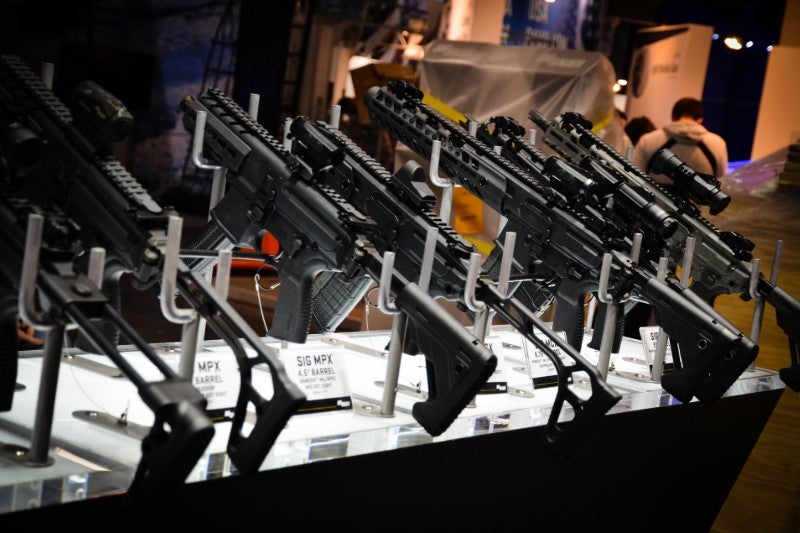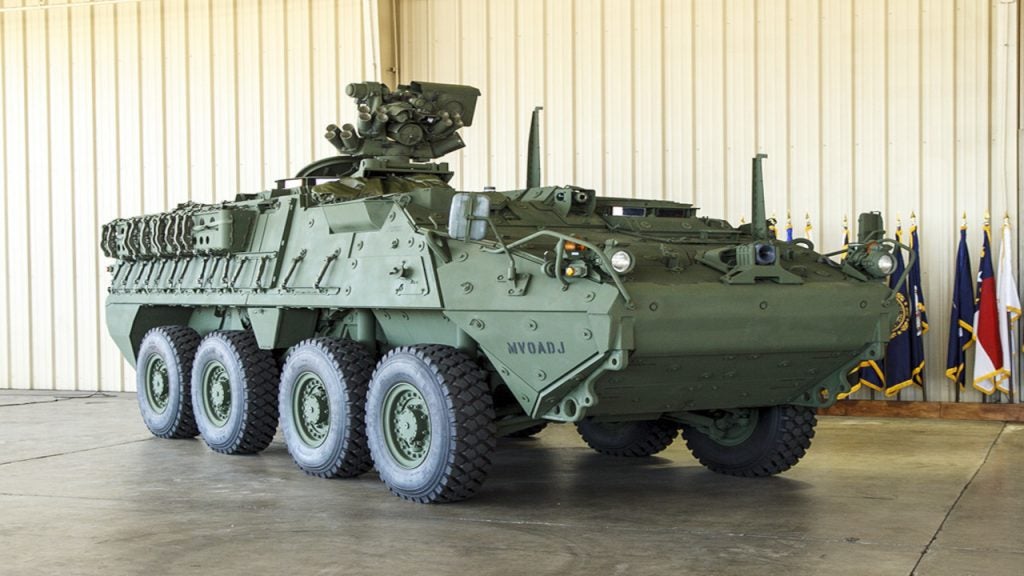
Combat operations in Afghanistan and Iraq, as well as expanded operations throughout the Middle East and North Africa, have allowed western militaries to gain valuable insights into how their equipment performs during arduous deployments. This is certainly true in the field of military rifles, where thousands of enemy engagements over nearly two decades have highlighted several shortfalls.
These shortfalls predominantly centre around the NATO 5.56mm bullet, standardised across the alliance in the 1980s and now fired by most individual service weapons outside of Russia and China. This is a high-velocity bullet, giving pinpoint accuracy for soldiers over long range and at just 4g can be carried in significant numbers by squads compared to heavier bullets, meaning more weight of firepower during engagements.
But it is no magic bullet. For special forces units, the 5.56mm is not ideally suited to close-quarter engagements such as inside buildings or tunnels. For regular units, the projectiles lacks effective range for longer distance engagements. The high velocity and low mass of the 5.56mm projectile means it lacks “stopping power” – a colloquial term for quickly neutralising a target – and in confined spaces can also cause increased collateral damage as it passes through walls or other structures.
Rifle requirements for close quarters
Experts in small arms, including special forces and industry professionals, recently gathered in Nuremberg, Germany, for the annual Enforce Tac exhibition to discuss the latest developments in alternative small arms technologies.
One key trend we observed at the arms show was the growing move towards an alternative bullet, known as .300 Blackout (BLK), for special operations missions. Compared to 5.56mm, this larger 7.62x35mm bullet offers significantly more stopping power for close-quarter engagements owing to its larger mass and lower velocity.
Another advantage is that a standard 5.56mm rifle needs little modification to fire a .300 BLK bullet, usually just a few components that can be easily swapped by the soldier.
How well do you really know your competitors?
Access the most comprehensive Company Profiles on the market, powered by GlobalData. Save hours of research. Gain competitive edge.

Thank you!
Your download email will arrive shortly
Not ready to buy yet? Download a free sample
We are confident about the unique quality of our Company Profiles. However, we want you to make the most beneficial decision for your business, so we offer a free sample that you can download by submitting the below form
By GlobalDataSeveral rifle manufacturers, including SIG Sauer, FN Herstal and Steyr Arms, demonstrated 5.56mm military rifles that could be converted to fire this ammunition. Steyr Arms highlighted its classic AUG in a new configuration optimised for .300 BLK, with a company spokesperson noting that the ammunition’s popularity was getting “bigger and bigger”, particularly amongst SF units.
SIG Sauer also showcased .300 BLK conversions for its popular MCX range. A company source noted that the conversion simply requires a barrel and magazine change, while other components such as the bolt mechanism remain the same. The company displayed its SIG MCX with a 6.75” barrel and integrated suppressor, as well as a smaller SIG MCX Rattler with 5.5” barrel as part of its .300 BLK range. The MCX Rattler is a personal defence weapon (PDW) that is marketed to both special forces and specialist regular troops that need to carry a concealed weapon.
An alternative to the MCX Rattler for special forces is the SCAR-SC sub-compact carbine from Belgium company FN Herstal, which was unveiled in a .300 BLK variant at Enforce Tac this year. It is understood that specialist units within Belgium’s federal police have already trialled this configuration.
Benjamin Klement, an ammunition specialist at Swiss company RUAG Ammotec, noted that he has seen demand slowly increasing for alternative calibres such as .300 BLK. The company manufactures this ammunition predominantly for special law enforcement units, including low-velocity .300 BLK rounds filled with lead pellets that provide instantaneous incapacitation. These, however, cannot be used by military units as they contravene the laws of warfare.
Klement told us that he still sees demand for 5.56mm, particularly owing to its superior aeroballistic performance, and thus better accuracy, over long ranges.
An FN Herstal spokesperson also noted that the company still sees current NATO calibres remaining in widespread service in most alliance countries for many years to come.
Many countries, including France and Germany, are currently introducing new military rifles from companies such as Heckler & Koch that are chambered for 5.56mm and will likely be in service for another 20-25 years.
US looks beyond 5.56mm
Nevertheless, the US Army is concerned that adversaries such as Russia and China could outgun it and no longer wants to retain the 5.56mm bullet for its frontline combat units.
In recent years the army has ramped up efforts to replace the M4 Carbine and its associated ammunition, following lessons learned from Iraq and Afghanistan, and has now begun an official programme known as the Next Generation Squad Weapon. This will see the acquisition of a NGSW rifle to replace the M4/M4A1 Carbine, and a NGSW automatic rifle to replace the M249 squad automatic weapon.
Daryl Easlick, deputy of the US Army’s Lethality Branch, explained that the US Army had conducted an in-depth study of alternative calibres and had come to the conclusion that both 7.62mm and 5.56mm were no longer adequate for frontline demands.
As part of its Small Arms Ammunition Configuration (SAAC) study completed in 2017, the US Army decided to pursue an ‘intermediate’ ammunition measuring 6.8mm. “That was the right calibre to go to, especially considering I wasn’t going to do a commercial off the shelf cartridge,” explained Easlick. “6.8mm made the most sense.”
The army is now canvassing industry for solutions, which could include revolutionary new bullet designs such as cased-telescoped examples that offer not only increased lethality but also weight savings for overburdened infantry soldiers. Rather than a traditional drawn-out acquisition process, the service is pursuing a rapid prototyping effort that could see up to 250,000 new military rifles being purchased and in the hands of soldiers by 2022.
While the decades-old NATO rounds of 5.56mm and 7.62mm will still be around for decades to come, it is clear that there is now a growing demand to replace them for both close-quarter and long-range engagements. The US Army’s planned replacement for the M4 Carbine and the introduction of the 6.8mm – which limits interoperability with NATO allies – could be a catalyst for a new era of standardisation that eventually phases out the 5.56mm.







